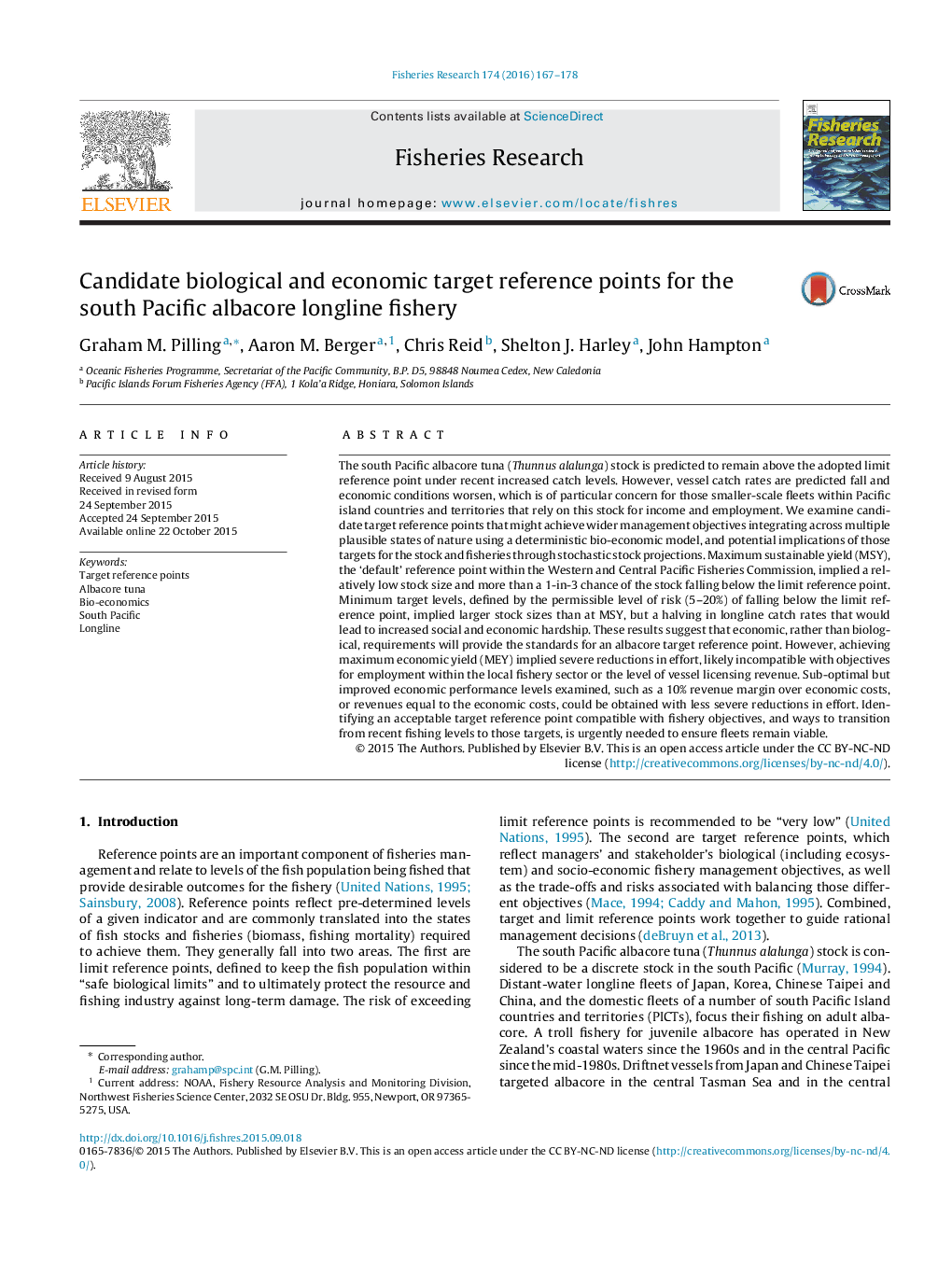| کد مقاله | کد نشریه | سال انتشار | مقاله انگلیسی | نسخه تمام متن |
|---|---|---|---|---|
| 6385588 | 1626795 | 2016 | 12 صفحه PDF | دانلود رایگان |
- The south Pacific albacore stock is biologically healthy but fleets unprofitable.
- Biological target reference points (e.g., MSY) imply uneconomic stock levels.
- Achieving maximum economic yield requires severe and unpalatable effort reductions.
- Alternative levels, still requiring effort reductions, may meet wider objectives.
The south Pacific albacore tuna (Thunnus alalunga) stock is predicted to remain above the adopted limit reference point under recent increased catch levels. However, vessel catch rates are predicted fall and economic conditions worsen, which is of particular concern for those smaller-scale fleets within Pacific island countries and territories that rely on this stock for income and employment. We examine candidate target reference points that might achieve wider management objectives integrating across multiple plausible states of nature using a deterministic bio-economic model, and potential implications of those targets for the stock and fisheries through stochastic stock projections. Maximum sustainable yield (MSY), the 'default' reference point within the Western and Central Pacific Fisheries Commission, implied a relatively low stock size and more than a 1-in-3 chance of the stock falling below the limit reference point. Minimum target levels, defined by the permissible level of risk (5-20%) of falling below the limit reference point, implied larger stock sizes than at MSY, but a halving in longline catch rates that would lead to increased social and economic hardship. These results suggest that economic, rather than biological, requirements will provide the standards for an albacore target reference point. However, achieving maximum economic yield (MEY) implied severe reductions in effort, likely incompatible with objectives for employment within the local fishery sector or the level of vessel licensing revenue. Sub-optimal but improved economic performance levels examined, such as a 10% revenue margin over economic costs, or revenues equal to the economic costs, could be obtained with less severe reductions in effort. Identifying an acceptable target reference point compatible with fishery objectives, and ways to transition from recent fishing levels to those targets, is urgently needed to ensure fleets remain viable.
Journal: Fisheries Research - Volume 174, February 2016, Pages 167-178
